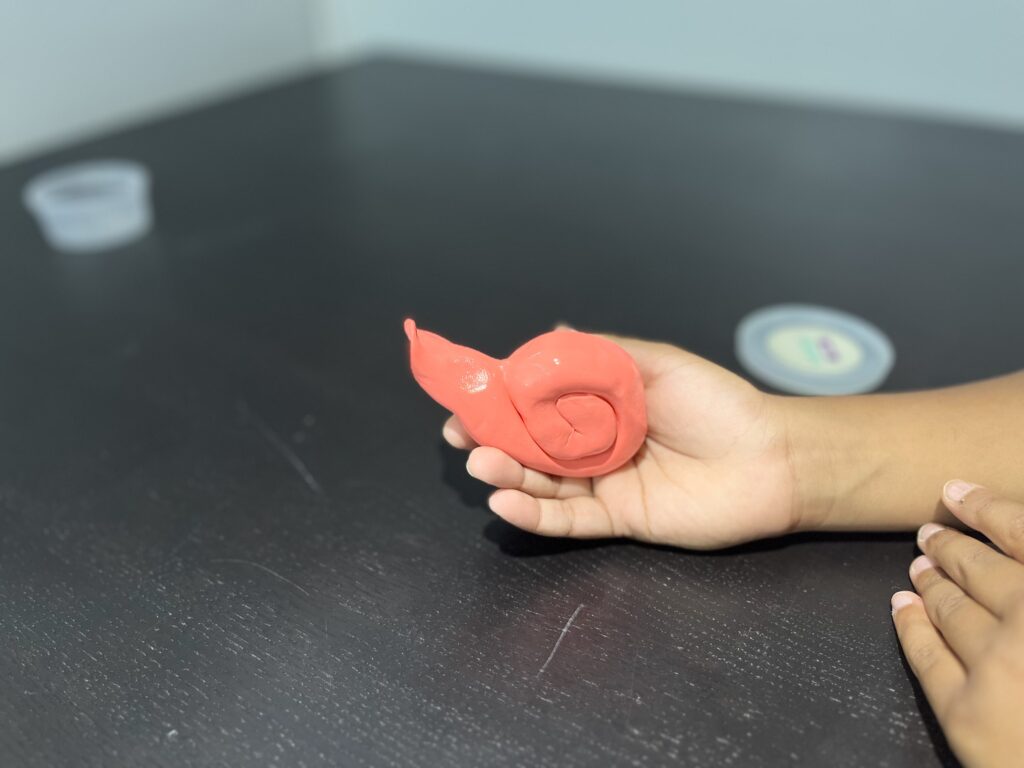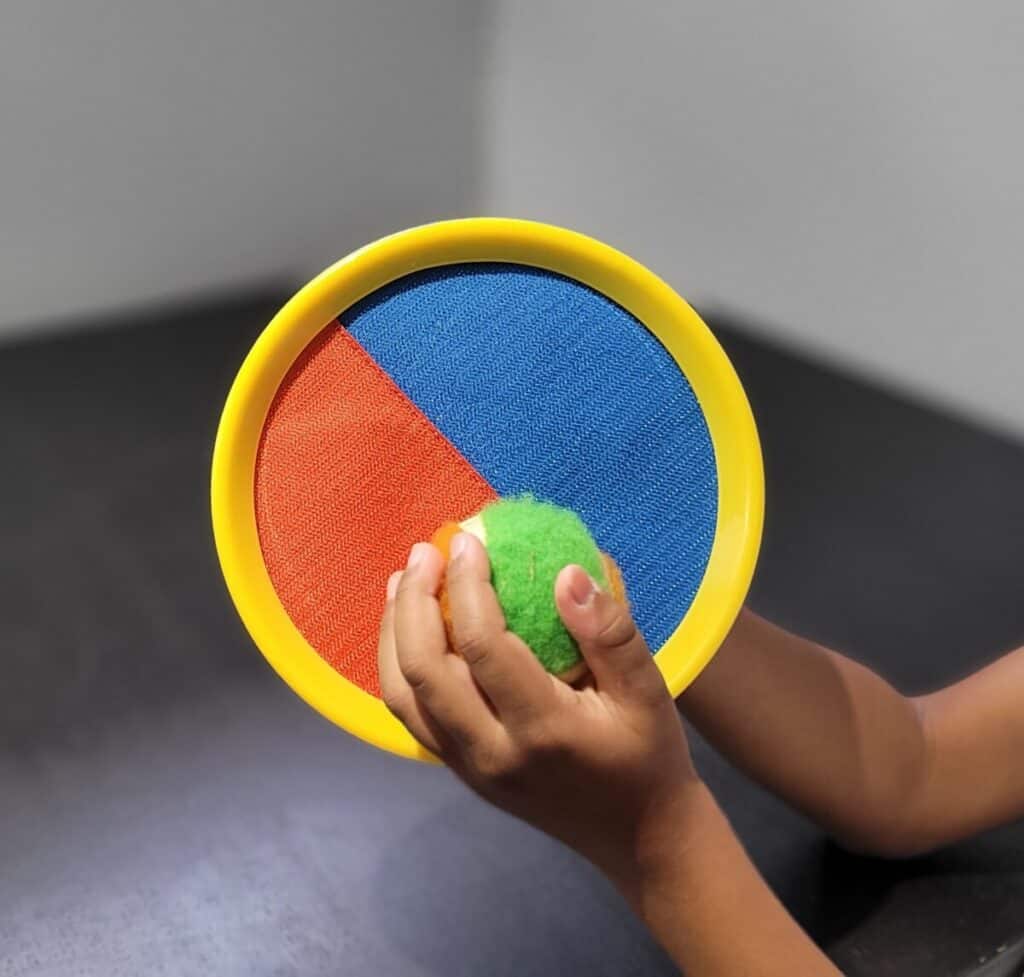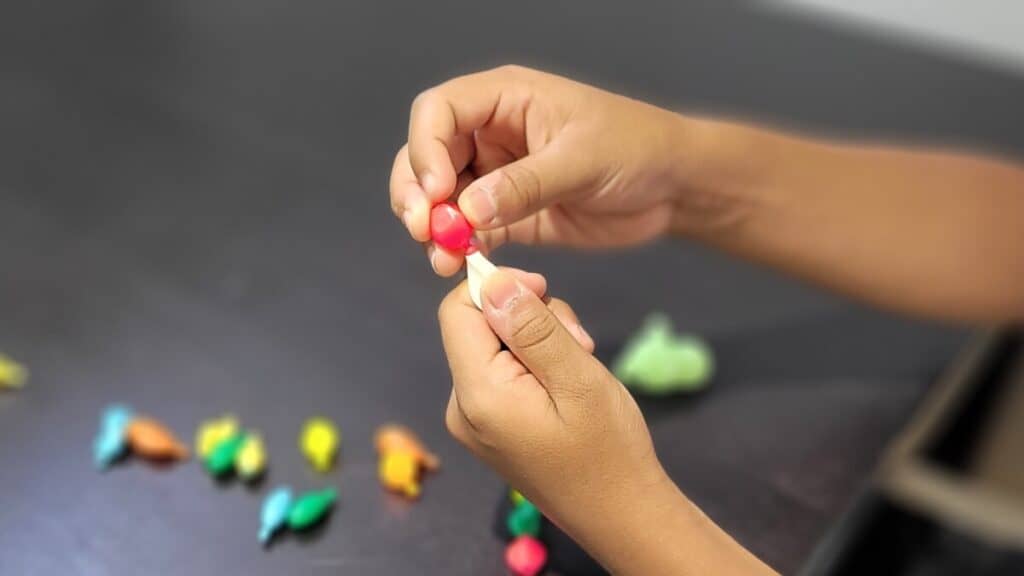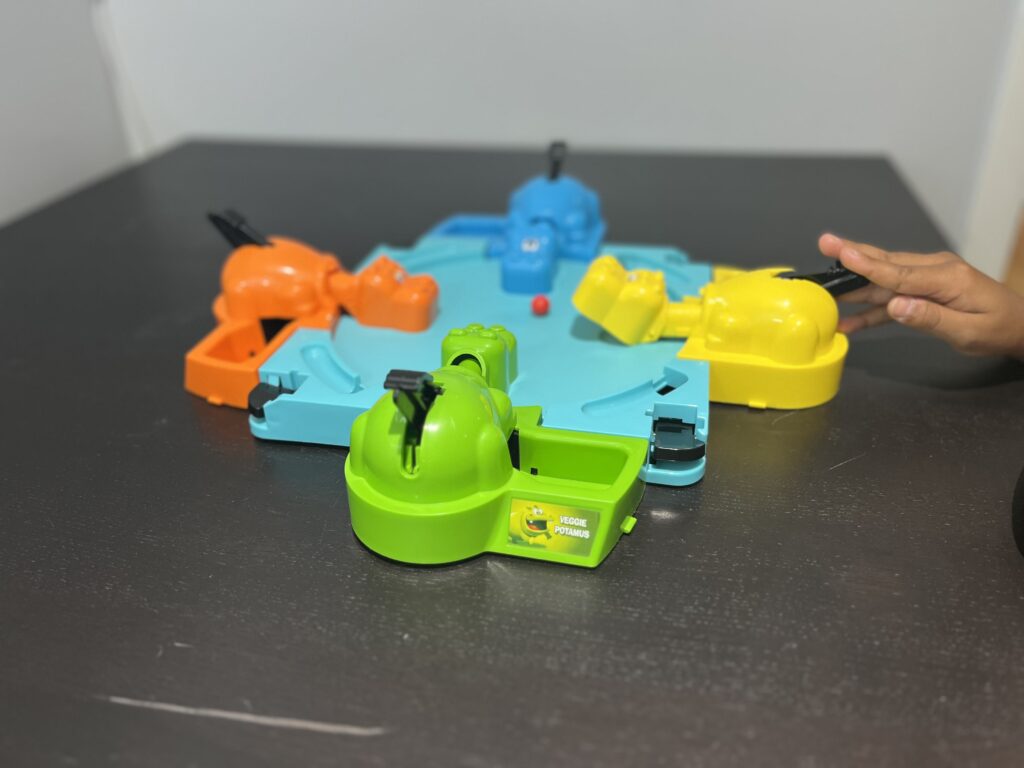One of the great things about being a pediatric occupational therapist is the chance to be creative. Children are a tough crowd; our treatment sessions must be exciting and fun to keep them engaged.
Hand strengthening increases the muscle strength of the hands and fingers, enhancing grip and manual dexterity. We see the hands become a cornerstone of how children interact with their loved ones and everything around them from an early age. The first toy children begin to play with are their hands. They are amazed by them; they are amusing and, at the same time, attractive. Children’s ability to achieve developmental milestones largely depends on their ability to gain the hand strength necessary to grasp objects within reach.
Later in life, hand strength becomes pivotal to children’s independence and success in their areas of occupation, playtime and schoolwork. Today we will explore 17 fun activities that help children strengthen their hands and arms. Aside from coloring and cutting with scissors, there are a variety of exciting and fun activities that will keep children returning for more…
- Rubberband Hand Shadow Puppets
It can’t get any simpler than that!!! Rubber bands are an inexpensive yet effective way to help our kiddos gain strength in their hands. Another great thing about rubber bands is that you can be as creative as you want. Picking fun colors with varying levels of resistance (elasticity) and sizes. The options are endless!
You can start with a smooth, stretchy rubber band as your kiddos gain hand strength, then move up in tension (resistance). One easy activity is using rubber bands during a hand shadow puppet show by placing the rubber band over the child’s fingers while in a closed pinching position. As they open and close the animal’s mouth, the rubber band can provide resistance, therefore, working on strengthening the hand. Children should feel tension but comfortable resistance as they open the web space between the thumb and the fingers. Trust me; they will enjoy the hand shadow puppet show so much that they will completely forget about the rubber band.
- Origami Paper Plane
Is a paper plane origami? Still determining if it qualifies as origami, but one thing I know is that once completed, it is a lot of fun to play with it. As a child, I remember loving making paper planes and flying them all over with my friends; I know I am dating myself here. We constantly challenged each other to come up with the sleekest design and the one that could travel the farthest.
Making paper planes is an easy and inexpensive way to provide children with a fun experience that will keep them entertained for some time and help them strengthen their hands and arms.
- Theraputty Animals

Theraputty is one of those quintessential items that are always present in an occupational therapy practitioner’s (OTPs) toolbox. Theraputty is a stretchy silicon-based material used by OTPs mainly for hand strengthening. It comes in different colors, and each color represents a resistance level. For instance, the yellow color is the least resistance and the black one is the strongest resistance.
I enjoy using theraputty because it provides a resistance gradient and is easy to clean up. Although, I caution you to keep it away from children’s clothing since it might stick to them. That being said, theraputty is a lot of fun to play with. I love making animal figures with it because it taps into children’s creative veins, and they get their hands “dirty” since it has a slime-like consistency. Another plus, I mean, what kid doesn’t like slime!! (No worries parents, it is not as gooey or messy!)
One fun and easy animal figure to make is a slug. The child needs to pull the theraputty out of the container and roll it back and forth like rolling dough until they make a cylinder-like shape of about a foot long. Then, using their pincer grasp, they start rolling the putty from one end toward the other, creating a coil pattern. Finally, they form the head, and by using a pincer grasp again, they pinch a small portion of the putty to form the ears. You can also make other animals, such as elephants and spiders. There is no limit to what you can create.
- Clothespins: Crocodile Buffet
Clothespins are the stars of this show. Clothespins are inexpensive and the number of activities they can be used for is endless. Clothespins come in different sizes, colors, shapes, and resistance. To play this game, children must have a bowl or container filled with small items such as pom-poms or anything else they can grab with the clothespin. The clothespins will be our crocodiles, so be sure to have your kiddos draw a little face on them. The goal of the game is to feed our very hungry crocodiles. The players have 15 seconds to grab as much food as possible. The first to collect the most food (pom-poms) is the winner. Give it a try!!! Try racing your children to see who can eat the most in this feeding frenzy…
- Ball Toss and Catch

Ball toss and catch games are among my favorite strengthening activities with my students, especially when the weather begins to warm up. Children love this activity because they can play it indoors and outdoors with family and friends. What I love the most about it besides the outdoors factor is that children can actively participate regardless of their physical abilities.
For this activity, I like to use a Velcro paddle and a fuzzy ball to play this game. The velcro paddle makes it easy for the child to catch the ball since it will stick to the velcro. All they have to do is to hold up the paddle when the ball is coming their way to catch it; genius!!! Children work on arm and hand strengthening when throwing the ball and retrieving it from the velcro paddle. Although my focus with this activity is hand strengthening, children also work on other skills such as eye-hand coordination. This activity is super fun and practical.
- Dartboard Game
A dartboard is another fun option you can play either indoors or outdoors. You might ask,” Is this even safe for children?” the answer is a resounding “Yes.” This dartboard game has substituted regular darts (those with a sharp end) for sticky balls, golf size balls covered in velcro. Instead of a solid smooth surface, the dartboard is covered in a soft fabric allowing the velcro ball to attach to it.
Children playing this game will strengthen their arms and hands, like when playing the “ball toss and catch game.” They also work on eye-hand coordination and visual-perceptual skills since the dartboard is stationary and divided into multiple colorful target areas. Lastly, this game can help improve children’s math skills. Since the dartboard has various target sections with value markers, children must add their scores to know the winner.
- Popping Beads

Popping beads is a game I have been playing with my students for many years now. It is a simple game, but it is a lot of fun for our younger kiddos (3-4 years old) and older kiddos (7-8 years old). Nowadays, you can find pop beads of all shapes, colors, sizes, and interests, like jewelry pop beads. For my younger kiddos; I use the larger ones because they are easier to grab and pull on.
I particularly enjoy this activity because children get to work their entire upper body: chest, shoulders, arms, forearms, hands, and fingers. They also work on eye-hand coordination, power grasp, pincer grasp, and problem-solving skills.
- Fidgety Power
To play this game, children need squishy fidget balls. These fidget toys come in all shapes, sizes and colors. Children and grown-ups alike love these fidget toys because of how they feel in their hands. They are refreshing to the touch and satisfying when they are squeezed. Some form exciting patterns and shapes when they are squished making them very enticing and a lot of fun. Children can play with these fidget balls for hours and never get bored.
Children can squeeze, pinch, stretch, throw, catch, and toss these fidget balls; you get the picture!!!. By incorporating this activity into their daily playtime routine children will strengthen their arms, hands, and fingers as well as enhance their fine motor skills, visual-motor skills, and sense of touch.
- Trouble Board Game
Trouble is one of those board games that never gets old and keeps being updated from generation to generation. It is a simple but fun game for children to play. That is why children like it because it is simply delightful. Children strengthen their hands playing Trouble when it is their turn to press the plastic bubble containing the dice. Children must apply considerable pressure with their hands to make the dice move. It is a great game to strengthen fingers, hands, and arms. As a bonus, children get to practice counting and turn-taking skills.
- Hungry Hippo

Hungry Hippo is another oldie, but goodie!!! Unlike Trouble, Hungry Hippo has not evolved with time. Nonetheless, this game continues to be among the favorites of children. Having to scoop up the food quickly (all those little marbles) to feed the very hungry hippo is no small feat. You must press the lever quickly to capture as many marbles as possible. Pressing the small lever works on strengthening the hand. It also assists with finger isolation, another crucial fine motor skill. I love therapy freebies!
- Cornhole
Have you ever wondered why it is called “cornhole”? Whatever the reason, this game is a staple of backyards during Summertime. Cornhole is a great game for children to strengthen their entire body because to get the beanbag inside the hole, children need strong legs, good postural (trunk) control, body awareness, upper body strength, and eye-hand coordination. Cornhole is a great outdoor activity for children to develop strong bones and muscles and produce some vitamin D at the same time.
Finally, hand strengthening should be a regular process as children play and explore their surroundings; therefore, it is essential to allow children the time to play and expose them to many different types of playful activities like the ones described above. They are not only good for their physical growth but also their cognitive, social, and emotional development. You might also like to read out post about how to boost fine motor development…
Remember “empowering our children goes a long way in helping them become independent and build their self-esteem”.
